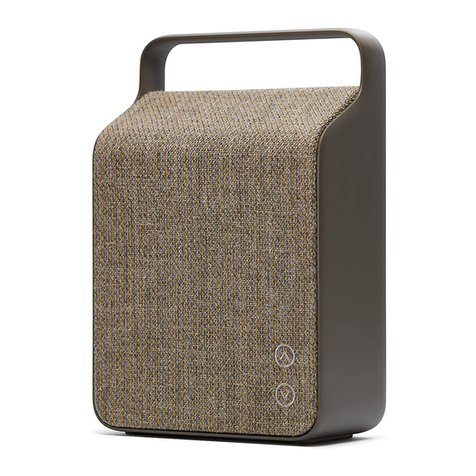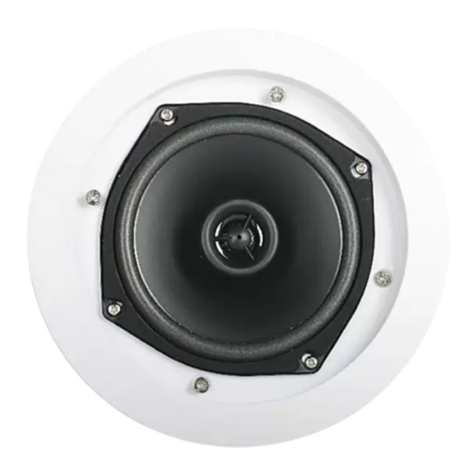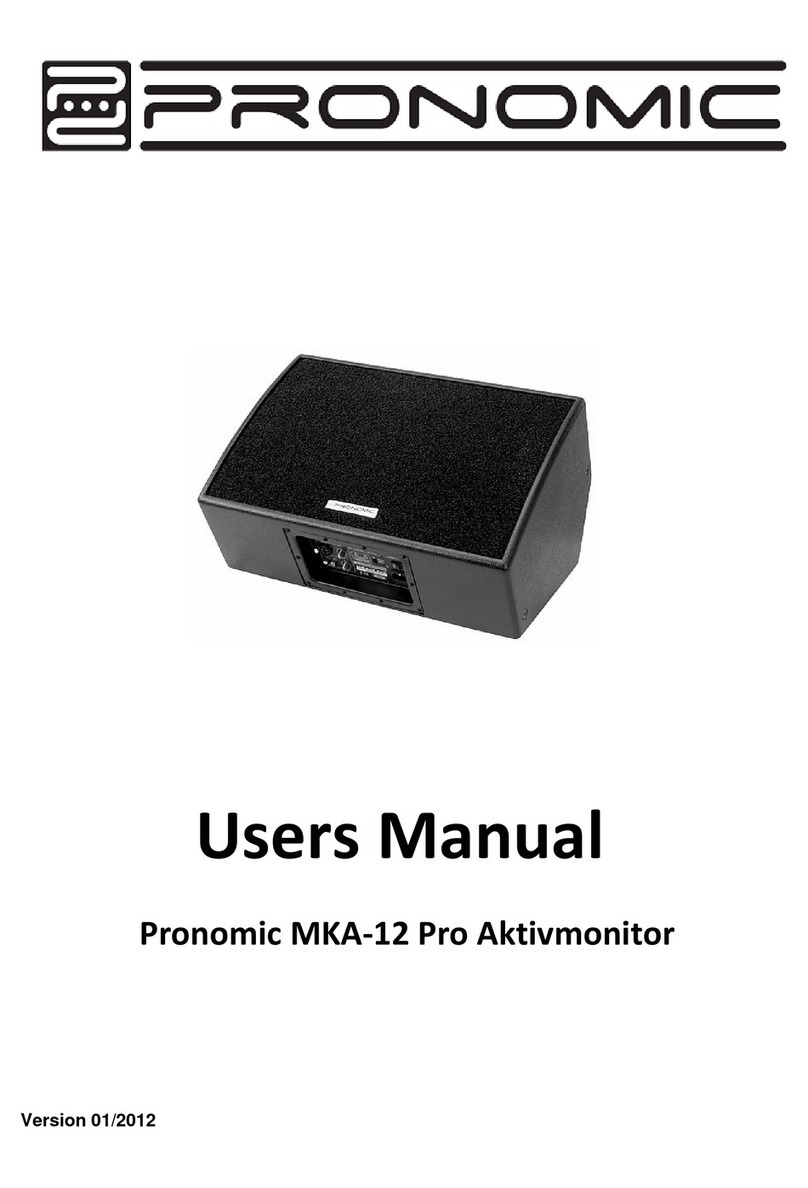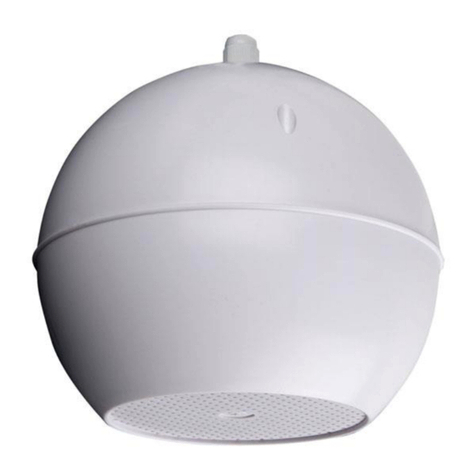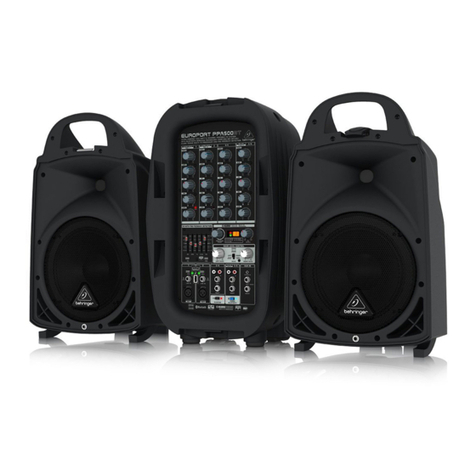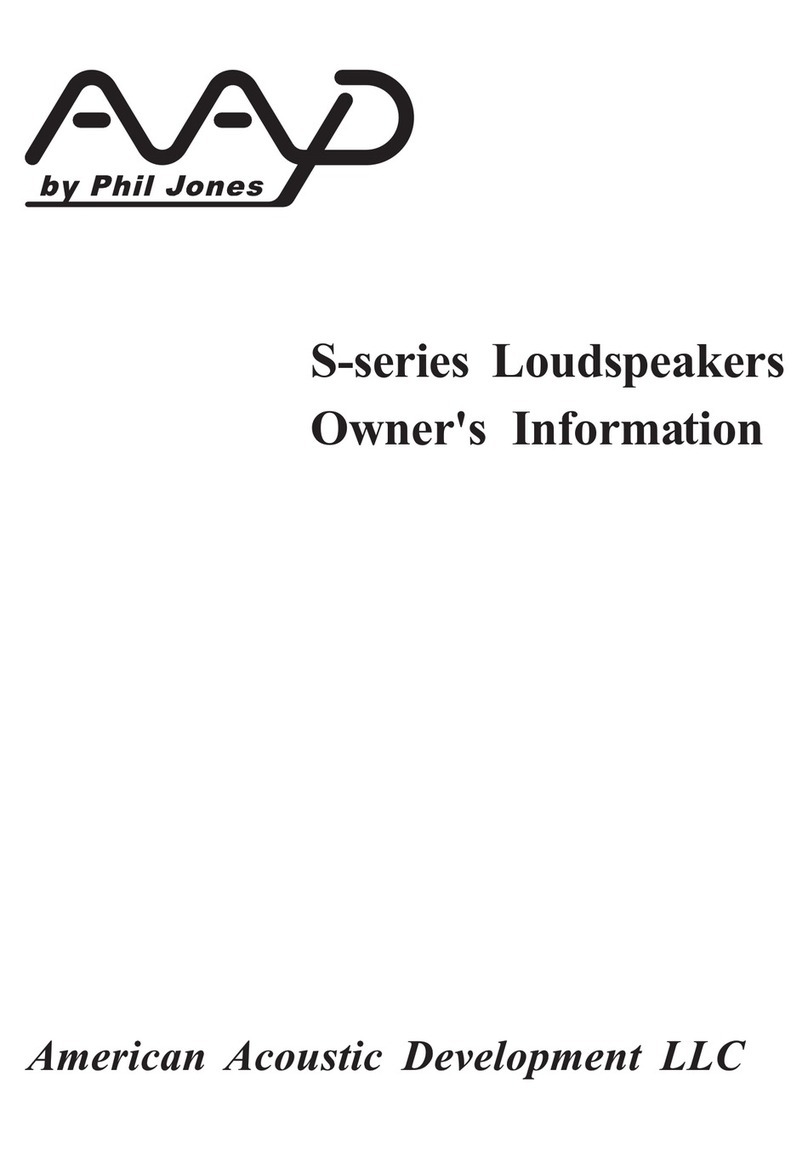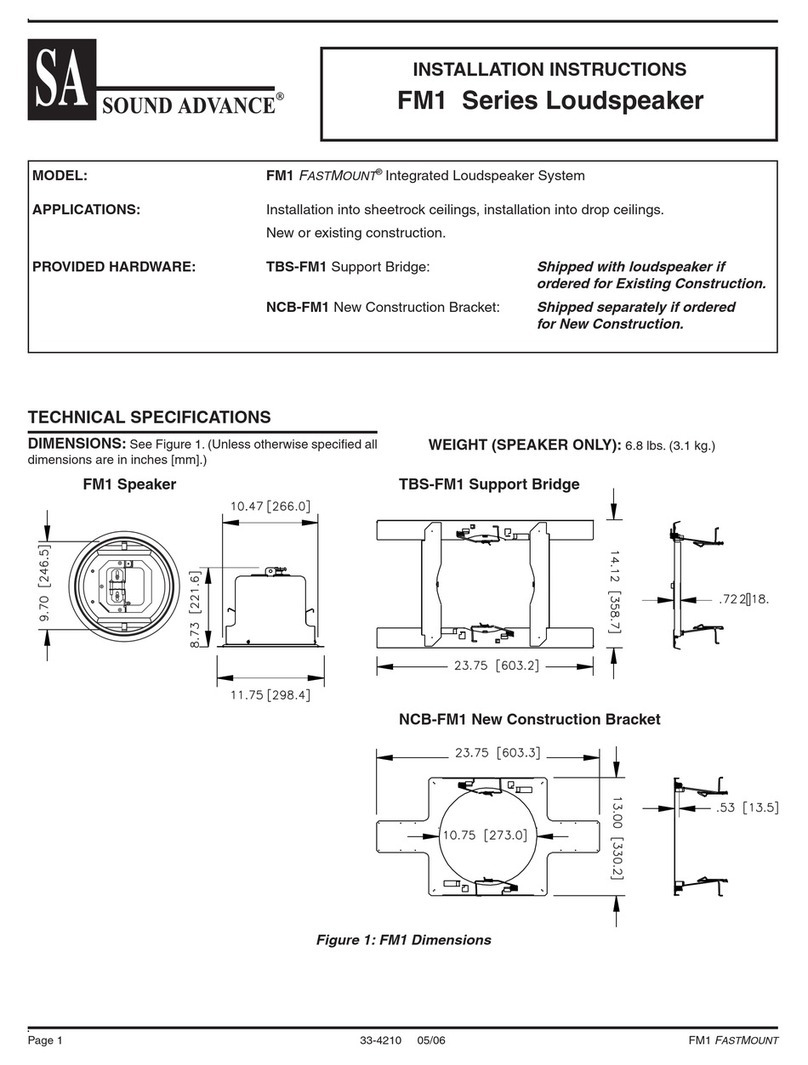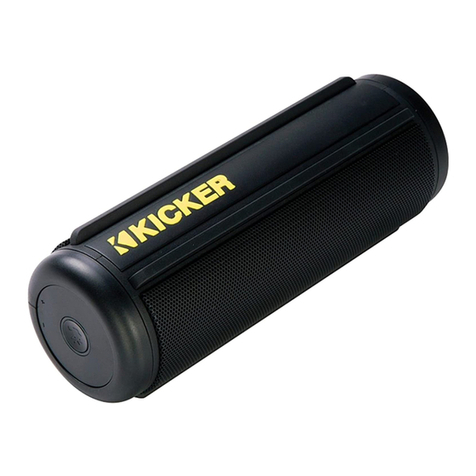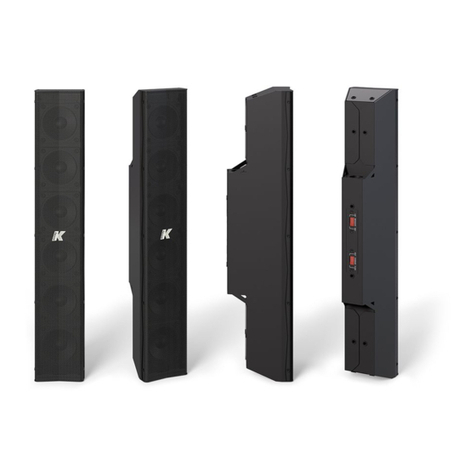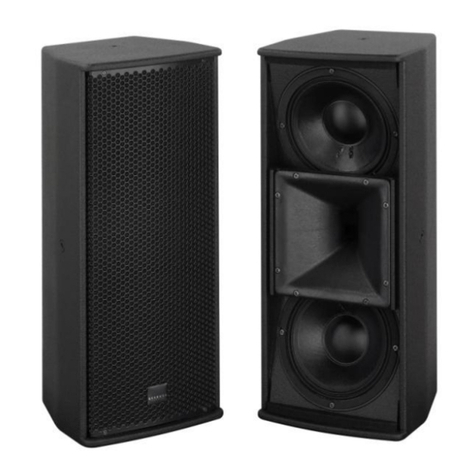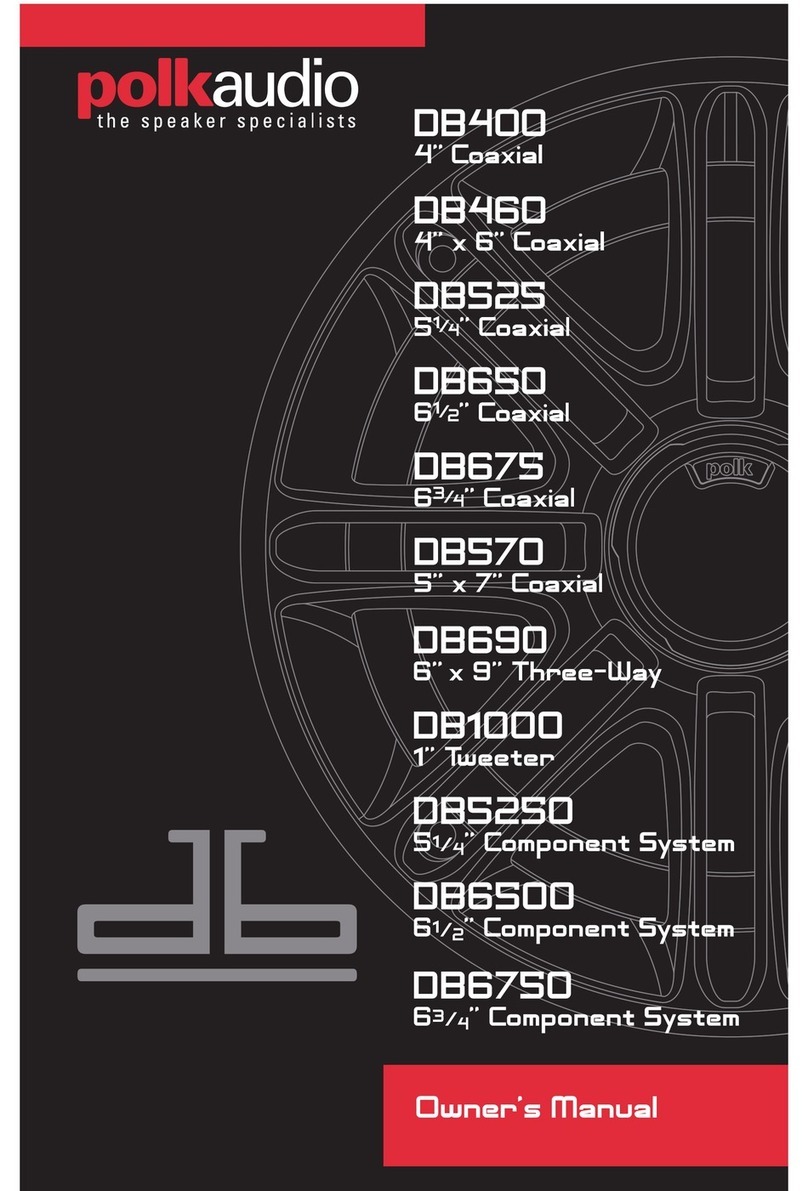1 Sound Contour CT28 User manual

Contour CT28 Wall & Ceiling Installation

Contents
Chapter 1. Contour CT28....................................................................3
CT28 Specifications........................................................................3
Chapter 2. Accessories.......................................................................4
CT28 Wall Bracket......................................................................... 4
.................................................................................................4
CT28 Horizontal Mounting Bracket................................................ 4
.................................................................................................4
CT28 Angle Bar..............................................................................4
.................................................................................................4
Chapter 3. Installing CT28 on the Wall Bracket................................5
Critical information..........................................................................5
Products, accessories and tools required...................................... 5
Procedures......................................................................................5
Disassembling the CT28 Wall Bracket....................................5
Installing the Tilt Arm assembly on the CT28....................... 10
Installing redundant safety anchors...................................... 14
Installing the Wall Bracket to the wall...................................15
Installing and pointing CT28 on the Wall Bracket..................18
Attaching a safety bridle........................................................21
Chapter 4. Installing CT28 on the Horizontal Mounting Bracket....22
Critical information........................................................................22
Products, accessories and tools required.................................... 22
Procedures....................................................................................22
Disassembling the Horizontal Mounting Bracket...................22
Installing the Horizontal Bracket on the CT28.......................23
Installing redundant safety anchors...................................... 26
Installing the Horizontal Bracket to the wall.......................... 27
Installing and pointing CT28 on the Horizontal Mounting
Bracket...................................................................................30
Attaching a safety bridle........................................................33
Chapter 5. Installing CT28 on the Horizontal Mounting Bracket and
Angle Bar............................................................................................35
Critical Information........................................................................35
Products, accessories and tools required.................................... 35
Procedures....................................................................................35
Disassembling the Horizontal Mounting Bracket...................35
Installing the Horizontal Bracket on the CT28.......................36
Installing redundant safety anchors...................................... 39
Installing the Angle Bar.........................................................40
Mounting and pointing the CT28...........................................45
Attaching a safety bridle........................................................49

Chapter 1. Contour CT28
Horn-Loaded Point Source Speaker Enclosure
Figure 1. Contour CT28
The Contour CT28 is a compact, 3-way passive loudspeaker capable of
delivering a maximum SPL of 140 dB. This is a powerful speaker that
sounds intimate at lower volumes.
The Contour combines two 8" low-frequency drivers and a coaxial 4" +
2.5" mid-high compression driver in a horn-loaded point-source
enclosure that delivers a controlled 100° x 50° coverage down to 200
Hz, with a bass response down to 70 Hz. It is a medium-to-long throw
point-source that maintains its directivity in the far field.
With its compact format coupled with its versatile accessories, this
loudspeaker is useful for small to large installations and live production
audio.
CT28 Specifications
Table 1. CT28 Specifications
Description Passive, compact, 3-way loudspeaker, lightweight horn-
loaded point source
Bandwidth 70 Hz - 18 kHz (-6 dB preset dependent)
Max SPL 140 dB @ 1 m with preset
Power 1780 W (program)
Directivity 100° × 50°
Elements (2) 8" low frequency drivers, (1) 4" + 2.5" coaxial mid-high
compression driver
Impedance 8 Ω
Connectors (2) NL4 audio input and link, (1) Neutrik NDL dummyPLUG
IP Rating IP55 indoor/outdoor and salt water resistant
Rigging (8) M5 points, (4) M6 points
Weight 44 lbs / 20 kg
Construction
Construction: Finland birch plywood (urea glue), matte salt
and UV resistant polyurea coating, 316 stainless steel and
aluminum
Dimensions 13.6" (345 mm) x 13.6" (345 mm) x 20" (510 mm)
Colors Stocking black and white, custom colors and fabrics avail
able
Accessories
CT28 Horizontal Mounting Bracket, CT28 Angle Bar, CT28
Wall Bracket, CT28 Fly Bar, CT28 Rigging System, Tube
Mount, Active Speaker Stand and Tubes, removable mag
netic front grille [included]

Chapter 2. Accessories
CT28 Wall Bracket
Wall-mount bracket with tilt and pan adjustment
Figure 2. CT28 Wall Bracket
This bracket attaches to the rear of the Contour CT28 enclosure and
mounts to a wall. It allows for variable positioning on both the horizontal
and vertical axes. The vertical positioning can be tilted down to 25°. The
bracket is made from stainless steel 316, or galvanized zinc plated steel
with black or white powder coating.
The kit includes:
•The fully assembled Wall Bracket
CT28 Horizontal Mounting Bracket
Wall- or ceiling-mount bracket with tilt adjustment
Figure 3. Horizontal Mounting Bracket
This bracket is for horizontal installation of a CT28 on a wall, allowing
for vertical aiming on a wall. It can also be used for ceiling mounting,
facilitating both vertical and horizontal positioning. The bracket is made
from stainless steel 316, or galvanized zinc plated steel with black or
white powder coating.
The bracket can be used together with the CT28 Angle Bar, allowing
CT28 to be positioned flush to the wall or ceiling, or extend the tilt up to
a maximum of 75° away from the wall or ceiling.
The kit includes:
•The fully assembled Horizontal Bracket
CT28 Angle Bar
Angled extension for the Horizontal Mounting Bracket
Figure 4. The CT28 Angle Bar
The Angle Bar attaches to the Horizontal Bracket in order to extend the
tilt angle. It can either extend the tilt angle so the CT28 is flush to the
wall or the ceiling to which it is mounted, or it can allow a range of tilt
angle from 15° to 75° away from the wall or ceiling. The bar is made from
stainless steel 316, or galvanized zinc plated steel with black or white
powder coating.
The kit includes:
•The angle bar
•4 × M8×20 bolts
•4 × M8 stainless steel lock nuts

Chapter 3. Installing CT28 on the
Wall Bracket
Critical information
Attention: This wall-mount bracket is intended for installation by
qualified professionals.
Notice: Please read these instructions carefully and completely
before attempting installation.
WARNING
Improper installation or suspension of any heavy load
can result in death or serious injury to persons, as well
as damage to property.
It is the responsibility of the installation personnel to
verify and guaranty the reliability and safety of the
installation.
Notice: This product must be installed in compliance with all
applicable local, state and national regulatory provisions. The
responsibility rests with the installer to verify that the installation
is carried out in accordance with any applicable legislation.
Important: The installer must assess the appropriate stability
andsturdinessofthe mountingsurface. Inthe caseof wall-mount
and ceiling-mount brackets, this includes, but is not limited to
verifying the positions of suitable studs in the case of drywall
mounts, hollow points in concrete block or solid concrete, as well
as the presence and vicinity of electrical wiring or plumbing.
Restriction: Only hardware and accessories included with
the product or specified by 1 Sound should be used for its
installation.
Restriction: Do not modify or alter the loudspeaker or any
accessory. Any modification by the user or installer could render
the product or the installation unsafe.
Restriction: Do not install a loudspeaker or any accessory near
any open flame or heat source.
Products, accessories and tools required
To install a CT28 enclosure permanently on a wall or surface using the
Horizontal Mounting Bracket, you will need the following:
•A CT28 loudspeaker enclosure
•The CT28 Wall Bracket kit
•An appropriate power drill and bit for the installation surface
material
•A 4 mm hex driver and/or a 4 mm hex wrench (Allen)
•A 5 mm hex wrench (Allen)
•A 3 mm hex wrench (Allen)
•Medium-duty mounting screws or bolts appropriate to the
mounting surface (coach screws for drywall studs, concrete
screw anchors for concrete or masonry, etc.); screws and bolts
should have a flanged head or a coupled washer ø14-16 mm in
order to retain the mounting plate
•Appropriate tools for securing the aforementioned fasteners
(power screwdriver etc.)
•A Torque wrench
•Optional: a short two-leg steel wire rope bridle, 2 × M5 lifting eye
bolt (shouldered type); eye bolt spanner or driver
•Recommended: pencil or marker, spirit level, stud finder
Procedures
Disassembling the CT28 Wall Bracket
The Wall Bracket ships fully assembled, but to facilitate installation, it
should first be separated into two parts, the bracket arm with the tilt
mechanism, and the wall-mounted yoke with the pan-fixing mechanism.
Before disassembly, be sure to note the proper interlocking configuration
of the Bracket; this will remove doubts when it is time to reassemble the
bracket.
Figure 5. The CT28 Wall Bracket.

CONTOUR CT28 WALL & CEILING INSTALLATION
Figure 6. Removing the bottom M4 pan-lock bolt.
•Use a 3 mm hex wrench to loosen and remove the M4×16 mm
pan-lock bolt from the bottom of the bracket. Be sure to keep
this bolt, as it will be necessary to fix the pan angle when the
installation is completed.
Figure 7. Removing the top M4 pan-lock bolt.
•Repeat the previous step on the top end of the bracket.

| 3 - INSTALLING CT28 ON THE WALL BRACKET
Figure 8. Removing the bottom M8 pivot bolt.
•Then use a 5 mm hex wrench to remove the M8×25 mm pivot
bolt and its washer from the top of the bracket. Again, be sure
to keep these bolts and washers, as they will be necessary to
complete the installation.
Figure 9. Removing the top M8 pivot bolt.
•Likewise, remove the M8×25 mm pivot bolt and its washer from
the bottom of the bracket, and keep them for the installation.

CONTOUR CT28 WALL & CEILING INSTALLATION
Figure10. Separating the tilt assembly from the wall
yoke.
•The tilt assembly should come away from the yoke.
Note: Before mounting the tilt assembly to the CT28 enclosure,
it is recommended that you unlock the tilt mechanism to ensure
that it moves properly.
Figure 11. Loosening the tilt-lock bolt.

| 3 - INSTALLING CT28 ON THE WALL BRACKET
Figure 12. Removing the tilt-lock bolt.
•First, loosen and remove the tilt-lock bolt using a 5 mm hex
wrench.
Figure 13. Verifying the movements of the tilt
mechanism.
•Swing down the tilt arm to verify the free movement of the
components of the tilt mechanism. As the rotating bracket and
the tilt arm move with respect to each other, the moving cam
should slide up and down the tilt arm and within the rotating
bracket with negligible resistance. IF THE MECHANISM
MOVES WITHOUT BINDING, PROCEED DIRECTLY TO
INSTALLINGTHE ASSEMBLY ONTHECT28. (on page10)
•If the tilt arm does not move, first inspect the entire mechanism
to verify that no components seem damaged or bent. If it
does appear damaged in some way, replace the entire mount
immediately.

CONTOUR CT28 WALL & CEILING INSTALLATION
Figure 14. Verifying the movement of the cam in the
tilt arm.
•If there appears to be no damage, and the bracket continues to
bind, use a 3 mm hex wrench to verify that the three screws that
hold the moving cam in the guide slot on the inside of tilt arm
are not too loose or not overly tightened. DO NOT REMOVE
THESE SCREWS, but only verify that they are tight enough to
keep the cam in the guide without rattling, but not so tight as to
impede the movement of the cam in the slot.
•If the mechanism does not move freely with negligible
resistance, the entire mount should be replaced.
Installing the Tilt Arm assembly on the CT28
Once the Wall Bracket tilt assembly has been separated from the wall-
mounted yoke, it can be easily attached to the CT28 enclosure.
Figure 15. The rear panel of the CT28 with the
mounting points for the bracket indicated.
•Lay the enclosure on its front grille, taking whatever necessary
precautions to avoid damaging the finish of the cabinet or the
grille.

| 3 - INSTALLING CT28 ON THE WALL BRACKET
Figure 16. Removing the M6 mounting bolts from
the top of CT28.
•Using a 4 mm hex wrench or hex driver, remove the two M6
× 25 mm screws from the top rear of the enclosure, inside the
recess. Keep these, as they will be used to mount the bracket.
Figure 17. Removing the M6 bolts from the bottom
(connector end) of the CT28
•Repeat the previous step on the bottom (connector end) rear
of the enclosure.

CONTOUR CT28 WALL & CEILING INSTALLATION
Figure 18. Aligning the tilt arm and M6 bolts with the
M6 rigging points on the CT28
Important: For permanent or semi-permanent installation,
the use of medium-strength thread-locking compound is
recommended on all user-installed screws.
•Insert the two mounting ears of the tilt arm into the recesses
in the rear of the speaker enclosure, oriented so that the tilt
mechanism is towards the bottom (connector end) of the CT28.
•Align the four holes in the mounting ears of the tilt arm with the
M6 rigging points from which the screws have been removed.
•Thread the four M6 × 25 mm screws into the four rigging points
through the holes in the mounting ears of the tilt arm.
•Firmly tighten these four screws using a 4 mm hex driver.

| 3 - INSTALLING CT28 ON THE WALL BRACKET
Fixing the Tilt Angle
It is necessary to fix the desired tilt angle before installing the tilt arm
assembly on the CT28 enclosure. the tilt angle of the Wall Bracket can
be adjusted from 0° (with the rear of the speaker cabinet parallel to the
wall) to -25°, in steps of 5°.
Before proceeding with the installation, be sure to verify the available
horizontal and vertical space for the speaker enclosure with the bracket
attached, referring to the figures below.
Figure 19. The necessary vertical and forward
clearance for the CT28 on the Wall Bracket
(perpendicular to wall).
Figure 20. The necessary vertical and forward
clearance for the CT28 on the Wall Bracket
(maximum tilt).
Figure 21. The holes corresponding to the
selectable tilt angles.
•Tilt the rotating bracket out away from the tilt arm to align the
holes that correspond to the desired tilt angle. The moving cam
should slide smoothly down the tilt arm to align with the various
holes.

CONTOUR CT28 WALL & CEILING INSTALLATION
Figure 22. Re-inserting the tilt-locking bolt in the
holes corresponding to the selected angle (-25°
shown).
Figure 23. Tightening the tilt-locking bolt.
•Re-insert the tilt-locking bolt and thread it into through the tilt
arm and the moving cam and tighten it firmly using the 5 mm
hex wrench.
Installing redundant safety anchors
Attention: When correctly installed, the Wall Bracket and the
Horizontal Mounting Bracket are designed to safely support the
CT28 speaker enclosure under normal conditions. However,
connection to an external anchor point using a steel wire rope
safety bridle is strongly recommended in any installation where
people could pass beneath or near the loudspeakers and may
be required by local or national codes in installations in public
places. If you intend to install a secondary safety bridle anchored
directly to the enclosure, it is recommended that you use two of
the M5 rigging points on the top of the CT28 enclosure for this
purpose.
In most cases of wall mounting a single CT28 enclosure, the use of
a steel wire rope safety bridle will provide sufficient redundant safety.
Carefully review the third-party manufacturer's documentation to assure
that the bridle and all its components are certified for the proper Safe
Working Load with the required Factor of Safety. The length of the
bridle and termination on the opposite end will obviously depend on the
requirements of the structure to which it will be anchored.
It will be necessary to install two eye bolts in the rear M5 rigging points in
the place of the M5 × 25 mm screw supplied with the speaker enclosure.
Only a forged steel eye bolt with a collar or shoulder, certified for the
proper Safe Working Load with the required Factor of Safety at its
minimum load angle can be used.
Important: For permanent or semi-permanent installation,
the use of medium-strength thread-locking compound is
recommended on all user-installed screws.
Figure 24. Threaded inserts usable for safety
anchors on the top or bottom ofCT28.
Figure 25. M5 Eye bolt measurement requirements.

| 3 - INSTALLING CT28 ON THE WALL BRACKET
Figure 26. Removing the M5×25 mm countersunk
screws for the installation of safety anchors.
•Using a 3 mm hex wrench, remove the two rear M5×25 mm
countersunk screws from the top of the CT28 enclosure.
Figure 27. Inserting the M5 eye
bolts in the rigging points on the
top of the CT28 enclosure.
•Thread the M5 eye bolts into the rigging points from which the
screws were removed and tighten them with your fingers.
Figure 28. Tightening the eye bolts.
•Using a slotted socket or eye bolt spanner, firmly tighten the
eye bolts. Once seated, the eye bolts should be aligned with
the openings perpendicular to the orientation of the enclosure
(see illustration).
Installing the Wall Bracket to the wall
The mounting plate of the CT28 Wall Bracket must be firmly fitted to the
wall or surface before mounting and fixing the pan angle the speaker
enclosure.

CONTOUR CT28 WALL & CEILING INSTALLATION
WARNING
Before beginning this installation, it is necessary to
ascertain the construction type, load-bearing capability
and durability of the wall or surface. Bear in mind that
the CT28 speaker enclosure weighs 20 kg (44 lb),
and can be positioned in such a way as to extends
the mass of the enclosure out to perpendicular from
the mounting surface. Therefore the increased forces
imposed on the fixings and wall must be taken into
account.
Careful thought must be given to ensure that the
wall structure is strong enough to safely support the
total load with the proper Factor of Safety required
by local, state and national norms or legislation. If
the facility or venue is open to the public and the
mount is within reach of the public, the installer should
take into consideration possible miscreant behavior or
tampering when determining the appropriate factor of
safety. If the wall structure is deemed incapable of
supporting the load, consideration should be given to
strengthening and/or stabilizing the wall or adopting
an alternative method of installation. In the case of
any doubt, architects, structural engineers or other
specialists should be consulted.
WARNING
Risk of Electric Shock
Drilling into hidden electrical wiring within walls can
result in serious injury or death, fires and property
damage.
BE AWARE OF WHAT YOU ARE DRILLING INTO.
Before drilling holes in any wall or surface, make sure
that it does not conceal electrical wiring or conduits.
Consult the wiring diagram of the facility or venue and
check for nearby outlets, switches or junction boxes
that could indicate concealed wiring, be it electrical
mains, network, telephone or other infrastructure.
CAUTION
Use Proper Eye, Ear, Head, Foot and Hand Protection
During Installation
This task requires the use of power tools and
potentially elevated loads.
Alllocalandnationalnorms, regulationsand guidelines
must be followed during the installation procedures,
including the use of proper protective clothing and
gear.
Notice: Due to the wide variety of building materials and
construction methods that can be encountered in an installation,
1Sound canonly providegeneral recommendationsfor installing
the Wall Bracket. It is the responsibility of the installer to assess
the appropriate stability and sturdiness of the installation. This
includesverifying thepositions of suitablestuds, postsor framing
in the case of drywall mounts, verifying hollow points in masonry,
concreteblock or solidconcrete, and utilizinganchoringmethods
and hardware appropriate for safe installation of the equipment
according to the construction material and depth of the mounting
surface. The responsibility rests with the installer to verify that
the installation is carried out in accordance with any applicable
legislation. In case of any doubt, architects, structural engineers
or other specialists should be consulted.
Figure 29. The wall-mount plate of the CT28 Wall
Bracket
Figure 30. Marking the mounting surface for
drilling.

| 3 - INSTALLING CT28 ON THE WALL BRACKET
•When it has been verified that there is no wiring or plumbing
in the wall behind the mounting position, use the plate itself
as a drilling template and mark with the pencil the centers and
outlines of the mounting holes. A spirit level can be useful to
assure that the mount is properly leveled.
Figure 31. Drilling the mounting holes.
•Drill the six holes, using a drill or percussion drill with a bit
appropriate to the substrate material (masonry/concrete, wood,
steel etc.) with the appropriate diameter and to the appropriate
depth for the anchor type being used.
•Once the six mounting holes have been drilled, clear them of
residue and verify the appropriate depth of each.
•Place the mounting plate against the wall and align the four
mounting holes centered on the drilled holes.
•Insert the six screws or anchors directly through the mounting
holesin theplate, tighteningthe screwanchors withyour fingers
sufficiently to keep them in place.
Figure 32. Driving the screw anchors into the wall.
•Whileholding theplatein place,use asocketwrench ora power
screwdriver to tighten each fastener gradually, alternating
diagonally opposed fasteners in an "X" pattern until each holds
the plate to the wall. When using a power driver, keep it at a
low speed to avoid stripping the threading cut into the substrate
material. Once the washer or flanged head on each bolt is in
contact with the plate and the plate is against the wall, continue
tightening them only by hand.

CONTOUR CT28 WALL & CEILING INSTALLATION
Figure 33. Tightening the screw anchors with a
torque wrench.
•Using a torque wrench, tighten each screw anchor into the
wall. Take care not to exceed the maximum installation torque
specified by the manufacturer of the hardware.
Figure 34. Applying downward force to verify the
mount.
•Apply force or weight to the mounting plate to physically verify
its ability to support the necessary load. There must be no
movement possible between the plate and the wall.
Installing and pointing CT28 on the Wall Bracket
Once the yoke of the Wall Bracket has been attached to the wall and the
tilt arm of the bracket is installed on the CT28 enclosure, the installation
can be completed by re-coupling the components of the bracket, and
then securing and pointing the loudspeaker to achieve the required
coverage.

| 3 - INSTALLING CT28 ON THE WALL BRACKET
CAUTION
Two People Required
The following task simultaneously requires moderate
two-handed lifting and the performance of fine motor
operations. To avoid possible injury or damage, this
procedure must be performed by two people.
Figure 35. Lifting the CT28 with the tilt assembly
onto the wall-mounted yoke.
•Lift the CT28 (with the tilt arm assembly installed) in front of the
yoke installed on the wall, and insert the rotating bracket into
the yoke.
Figure 36. Inserting the bottom pivot bolt.
•As one person holds the speaker enclosure, the second
operator should align the holes in the top and bottom of the
rotating bracket with the holes in the top and bottom of the
wall-mounted yoke and insert and thread the bottom pivot bolt,
through its washer into the aligned holes in the yoke and
bracket. DO NOT release the CT28.
Figure 37. Tightening the bottom
pivot bolt.
•Oncethe bottompivot boltis threadedthroughthe yokeand into
the rotating bracket, tighten it firmly using a 5 mm hex wrench.
Figure 38. Inserting the top pivot
bolt.
•As one person continues to hold the speaker enclosure, the
second operator should then insert the top pivot bolt and thread
it through the wall-mounted yoke and into the rotating bracket .
Figure 39. Tightening the top pivot bolt.
•Becausethe speakerenclosure is stillfree torotate horizontally,
it should not be completely released at this point, but the mount
should safely support its weight.

CONTOUR CT28 WALL & CEILING INSTALLATION
Fixing the pan angle
Once the pivot bolts have been installed and tightened, the CT28 must
be fixed at the required pan angle to achieve the desired coverage.
As shown in figures below, the CT28 can be panned up to 90° left or
right when installed on a column, or up to 60° in either direction when
installed on a wall.
Figure 40. Horizontal clearance for the CT28 on the
Wall Bracket on a column at maximum pan (90°)
Figure 41. Horizontal clearance for the CT28 on the
Wall Bracket on a continuous wall at maximum pan
(60°)
The top and bottom plates of the feature a set of holes used to set the
pan angle, in 10° steps.
Figure 42. The holes corresponding to the
selectable pan angles (overhead view).
Figure 43. Inserting the bottom pan-locking bolt –
0° (perpendicular) pan angle shown.
•Swing the CT28 into the desired pan position, aligning the
threaded insert in the rotating bracket with the appropriate hole
in the lower end-plate of the wall-mounted yoke, and thread the
M4 ×16 mm pan-lock bolt into the bracket through the yoke.
Table of contents
Other 1 Sound Speakers manuals

